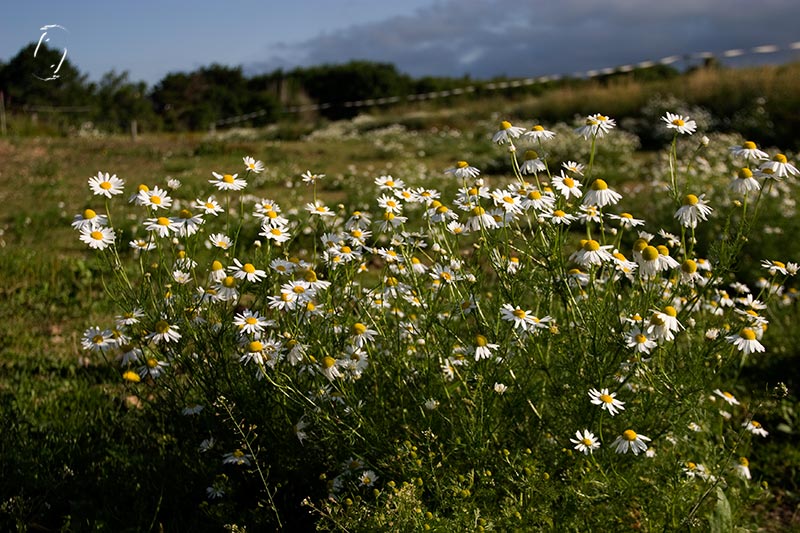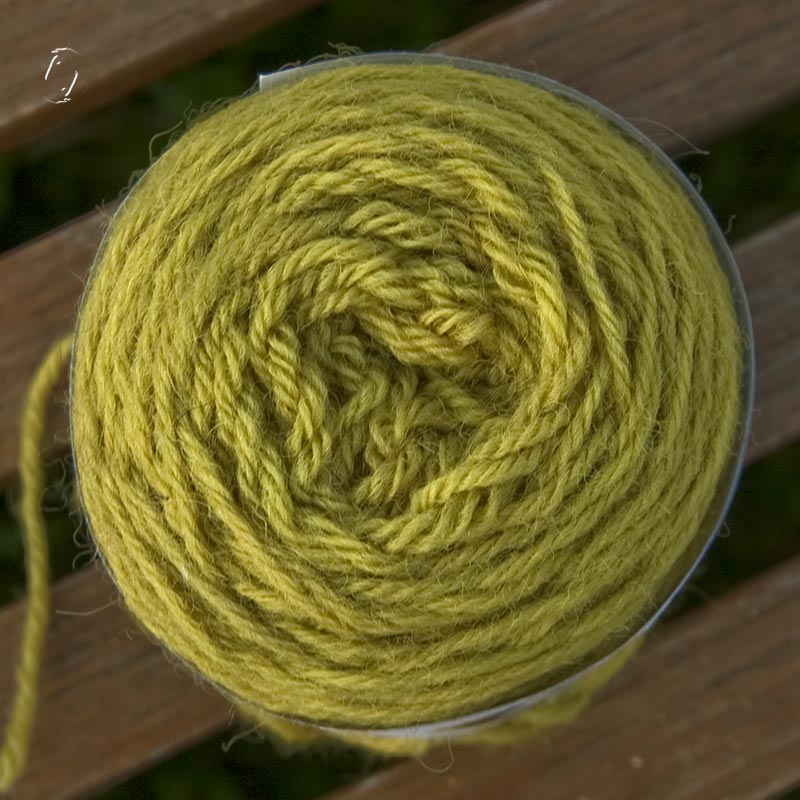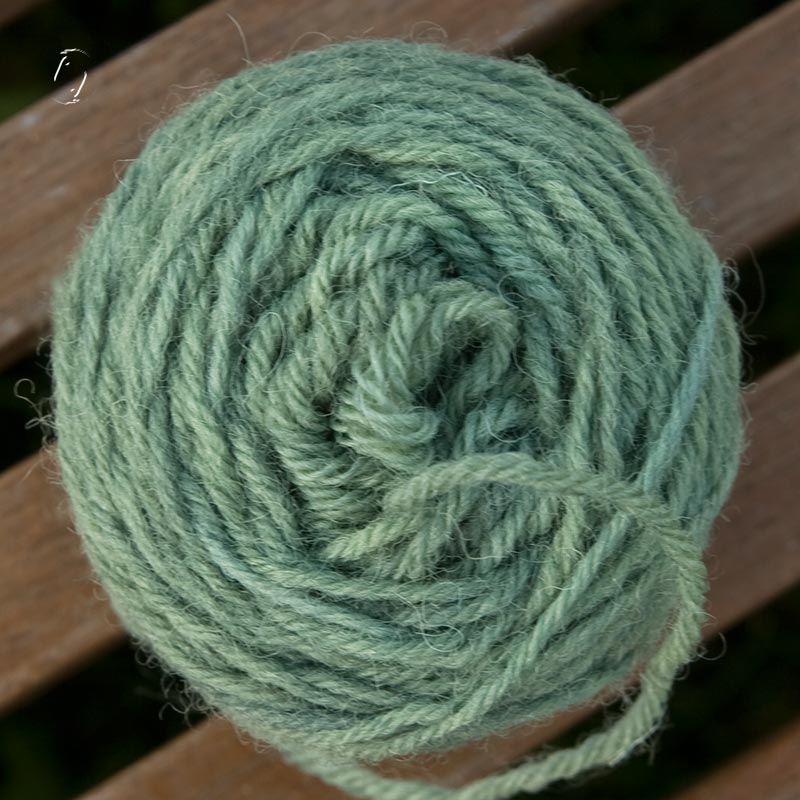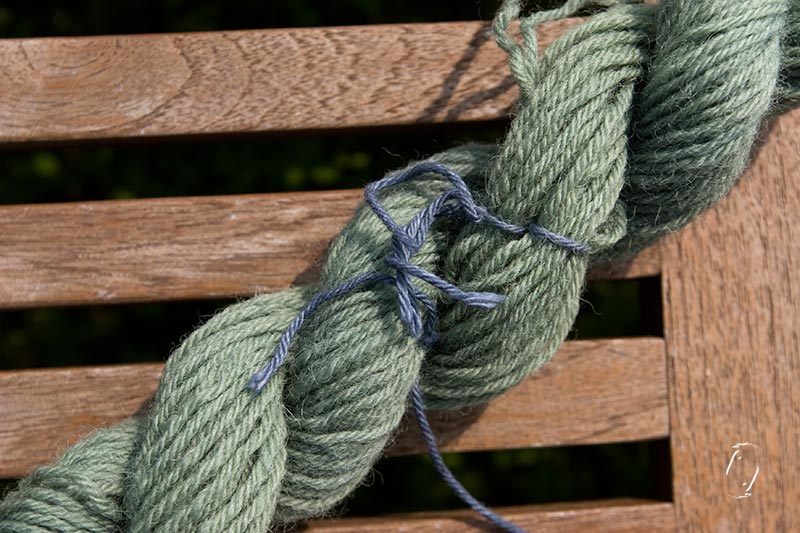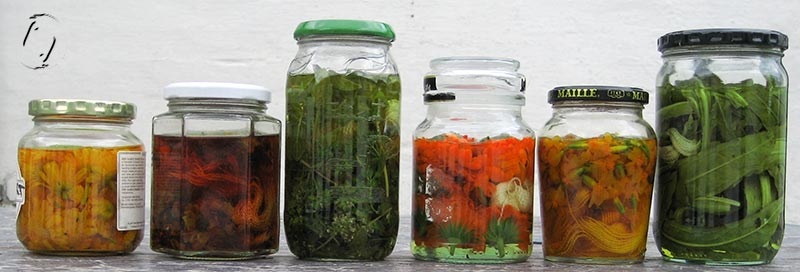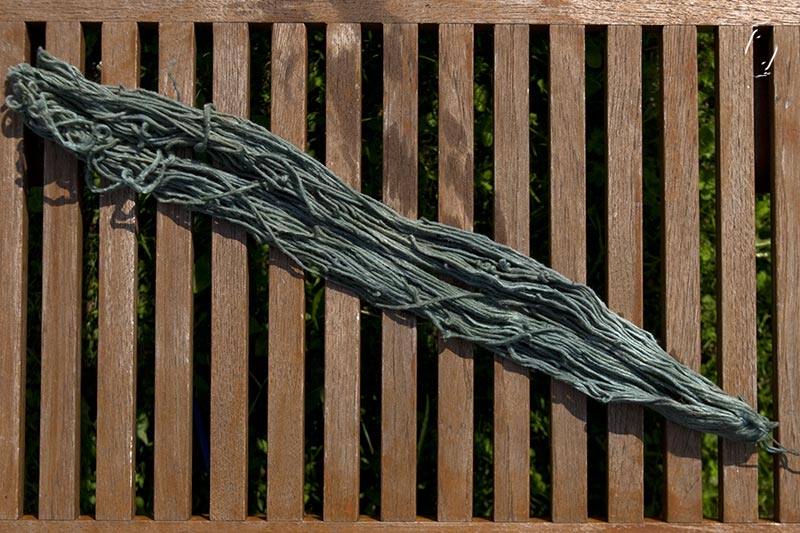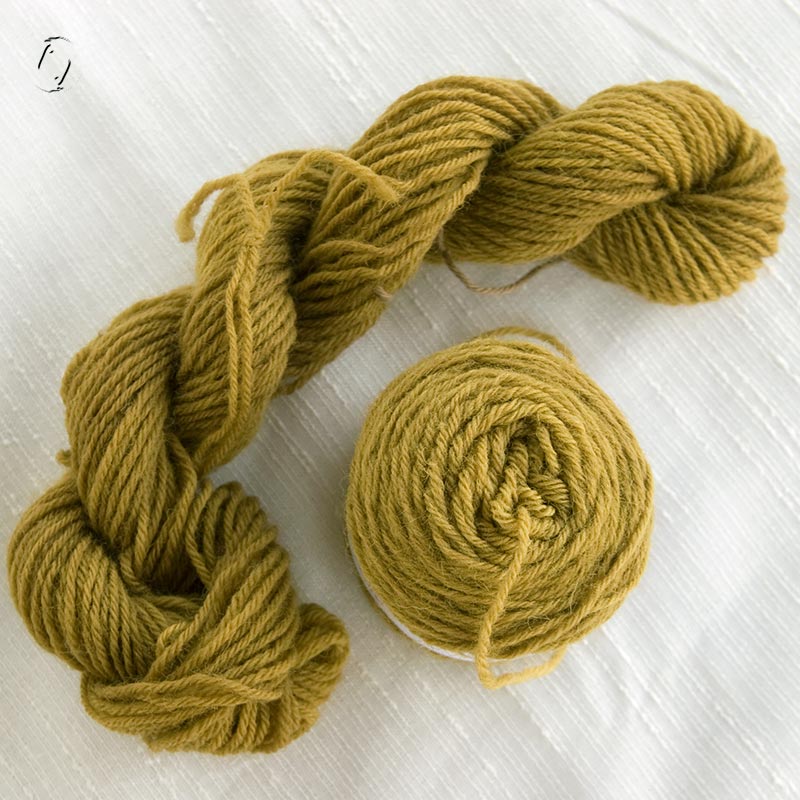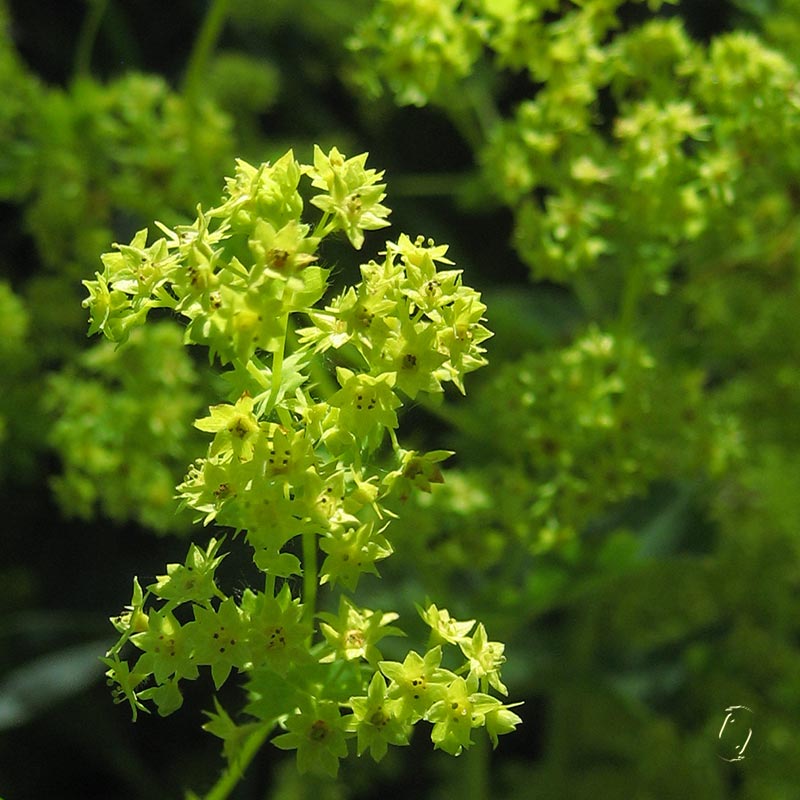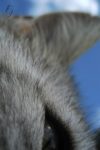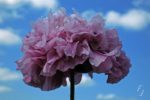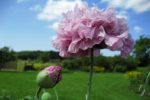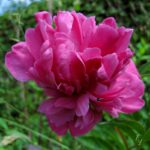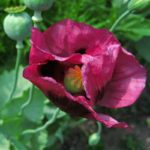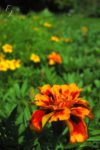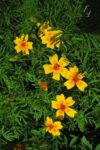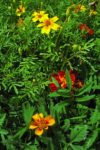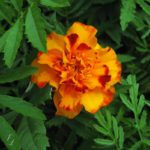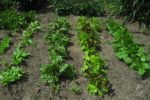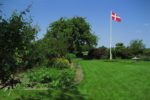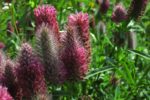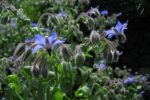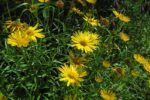Scentless chamomile, wild chamomile, mayweed, Matricaria perforata.
If you don’t have the time or space to grow specific dye plants, there is plenty to be found in the wild. I wanted to do a comparison of chamomiles and decided to use the method of extraction described by Leena in Finland. She suggests that you can get more dyestuff out of the plant by making the water alkaline. When the dye has cooled it returns magically to a neutral pH, you can then add the wool without harming it. I did one pot with just regular boiling of plants, the other with 1 tbsp. of potash. One alum skein and one unmordanted in each pot. As you can see, the yarn from the alkaline extraction is a lot darker! If your bath is not quite neutral enough after cooling, you can add a small slosh of vinegar, the extra dye will still be in there.
I think this yellow is just as good as Dyer’s Chamomile, remains to be seen if there’s a difference in permanence. Of course you won’t get the orange that the Anthemis tinctoria provides just with enough dyestuff, but the alkaline method works to get a fair orange (not as vibrant) and for yellow it’s a good and cheap source, available all summer in your nearest ditch. I used the whole plant, so no careful picking of flower heads either.
You will need to use the fresh plants, though, no freezing or drying. I also used a huge dye ratio, like 15:1, so that is another difference. Not that it matters, it’s so abundant where it is. The dye ratio however doesn’t really show in the unmordanted skeins, so perhaps they would come out with no colour at all at a lower rate. Mordanted yarn should give a less golden, clearer yellow at a lower ratio and with iron I’m assuming you could get some sort of olive colour.
Tomorrow we’ll try a different chamomile!
på dansk
Lugtløs kamille er ideel at farve med, hvis man ikke har farveplanter i sin have, eller slet ingen have. Den breder sig lystigt på kornmarker hvis den får lov og helt sikkert alle andre steder som ikke sprøjtes.
Jeg besluttede mig for at teste en metode til at trække mere gul ud af planten ved at gøre vandet basisk med potaske, ca. en spsk. til en stor 8 l. gryde. NÃ¥r vandet sÃ¥ har kogt og er kølet ned igen, falder pH værdien igen til neutral – hvis ikke kan man tilsætte en lille sjat eddike – den ekstra farve er stadig i vandet.
Jeg lavede en identisk gryde uden base, og som det ses på billedet er den en del lysere. Den orange farve er ikke helt ligeså klar som med farve-gåseurt, jeg har også brugt en hel del mere plante (15:1), men det er da et fint alternativ. De to fed i midten er ikke blevet bejset først. Med tanke på den enorme mængde planter jeg brugte, så tænker jeg, at det ikke kan betale sig at farve ubejdset garn, men med alun kan man godt nøjes med mindre mængder og stadig få en flot gul. Med jern vil jeg tro man kan få olivengrøn eller noget i den henretning.
Man kan ikke tørre eller fryse vild kamille og farve senere, som man kan med gåseurt, det skal bruges frisk.
I morgen prøver vi med en anden slags kamille!

